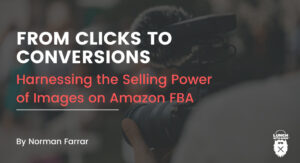Complete Guide to Building Your E-Commerce Brand in 2021
By Norman Farrar
Table of Contents
- Building a Business From Scratch in 12 Easy Steps
- Determine Your Target Audience
- Find Out About Your Competitors
- Make Your Branding Stand Out
- Define the Focus of Your Brand
- Define the Personality of Your Brand
- Pick a Name for Your Business
- Choose Your Brand Colors & Fonts
- Come Up with a Slogan for Your Brand
- Design a Logo for Your Business
- Make Use of Social Media’s Power
- Get Second OpinionsEvolve Your Brand With Time
- Evolve Your Brand With Time
- Conclusion
You’ve decided on a fantastic product to sell and have already established the groundwork for your new business. You’re still unsure how to develop a strong brand identity, though.
Don’t worry if this describes your scenario; you’ve come to the right place. We’ve compiled the best branding strategies from our top expert guests on the “Lunch With Norm” podcasts, including Brenda Mendez, Maayan Gordon, Ryan Rigney, and Jeff Sass. This guide will teach you all you need to know about starting an e-commerce business from the ground up.
You want to make sure that you create your brand well, whether you’re doing business online or offline. One of the essential methods to grow your business is to have a compelling brand story. It allows you to gain the recognition you need to generate leads and develop relationships with your consumers

Building a Business From Scratch in 12 Easy Steps
What does it mean to “build a brand?” Your brand is more than simply your logo or name — it encompasses all of the assets that influence how people view your company, including:
- Content
- Tone of voice
- Visuals (brand colors, images, logo, font)
- Digital presence (website, social media platforms)
- Collaborations with influencers
Let’s look at this step-by-step strategy to assist you in constructing your brand from the ground up now that you understand the aspects that make up your brand.
1. Determine Your Target Audience
You must first identify your target audience before learning how to develop a brand. When deciding on your brand-building methods, you should keep this audience in mind. It may be more difficult to create leads and convert followers if you target an irrelevant audience.
You may figure out who your target market is by looking at:
- Location
- Demographics and psychographics(spending habits, hobbies, values)
- Audiences/followers and brand of competitors
- Your brand’s contribution to the solution of a consumer problem or pain point
Consumer relevance may suffer as a result of targeting a large audience. On the other hand, you’ll have a fantastic foundation for constructing the remainder of your brand’s content and assets if your target audience is small but highly relevant.
2. Find Out About Your Competitors

Competitor analysis is an important stage in developing your brand and establishing yourself as an industry leader.
While every company has competitors, conducting thorough competition research aids in the development of a distinct yet relevant brand. Even though you’re in the same business, your brand may be able to cover holes in the market that your competitors can’t.
Here are some methods for locating and researching competitors in your niche:
- Search for your product category or industry on Google.
- Look for industry-related discussions on social media or Reddit.
- Search for hashtags on social media to see which brands are utilizing them.
After you’ve found a few similar brands, do a competitive study on a couple of them. This gives you a lot of information into what works and what doesn’t in terms of branding.
Instead of duplicating everything they do, use this study to get ideas for how you want to create your brand.
When studying a competitor, keep the following points in mind:
- Brand assets, like their logo, font, and colors.
- Tone of voice
- Marketing strategy
- Content
- Online reviews
- Brand appeal
Many competitor research tools, such as SEMrush, are accessible for internet firms. While you may use SEMrush to assess your own website’s performance, you can also use it to evaluate the performance of others.
You can examine backlinks, keywords, traffic, ranking pages and more for your competition. This information might help you understand who their target audience is and how they approach them.
If you’re just starting as a business and don’t want to spend the money on software, you can do your competitor research manually.
“When I was developing my product, I created it to be the best in its class. For that to happen, I even researched outside of my competitor sphere. I personally went to the stores of my competitor brands to touch and feel their products to get an idea for packaging. I perceived my competitors with all five senses,” says Brenda.
3. Make Your Branding Stand Out

It might be challenging to make your brand stand out in a sea of similar ones. However, using your competitor research and target demographic, you can create a brand that solves problems while also distinguishing yourself from the competition.
Customers will remember your brand if you offer something distinctive and different. This could be the assets you create for your brand, the way you sell it, the language you use to describe it, or the products and services you provide. The goal is to maintain your individuality while being relevant.
4. Define the Focus of Your Brand
When establishing a brand, keep its emphasis in mind, especially if you’re just getting started.
Trying to solve everyone’s problems will be exhausting, so concentrate on what you know you can accomplish best. Your brand’s solutions are a terrific addition to your website’s homepage copy, mission statement and social media platforms. Consider it an elevator pitch to pique a customer’s interest.
Create a statement that naturally contains the following:
- The product or service offered by your company
- Your target market
- Your brand’s individuality
- Your brand’s solution to a pain point(s)
If you want to learn how to brand your company, you should first determine what you do, why you do it and for whom you do it.
5. Define the Personality of Your Brand
Identifying and defining your brand’s personality is one of the most crucial aspects of learning how to establish a brand.
It doesn’t mean your brand can’t have a personality just because it isn’t a person. It is critical to give your brand a distinct personality. It adds a human element to it.
Consider the emotions that your target audience is experiencing while searching for answers and start creating content and language that reflects your comprehension of their worries.
To gain a sense of how you can convey your narrative to your audience, you might want to write it out. For example, perhaps you created your brand in response to a similar problem or emotion, or your brand appeals to a specific demographic, making you relevant.
Another thing to think about is finding terms that define your brand’s personality.
People will interact with your brand more if it has a personality, just as they do with people. To build brand trust and consistency, keep your brand’s persona consistent across all branded products and platforms.
“I highly recommend the book ‘Building A Story Brand’ by Donald Miller if you’re looking to build a compelling internal brand story,” advocates Jeff. “The internal brand story is one that you tell all your employees and managers in the company. It’s different from your external brand story, which you use for marketing.”
6. Pick a Name for Your Business

Your brand name carries a lot of weight regarding how you market yourself on social media, the internet or in commercials. It’s generally the first thing customers see or hear, and it has the potential to stick with them or go away. Of course, you want to leave an impression!
Your logo, marketing approach, trademark, and other digital assets will all be influenced by the name. A company name should be distinct and easy to remember. If you aim to extend your products or services, keeping the name broad will help.
You may create a whole new name, use a suggestive phrase, combine two terms, or even employ acronyms. There are various ways to name your business, but make sure it’s unique to you by researching, especially before registering a website domain.
7. Choose Your Brand Colors & Fonts
Your choice of colors and fonts will influence your website and other branded products, as well as evoke specific responses from your target audience. Understanding some of the consumers’ buying habits, particularly when it comes to color, may be beneficial. According to one survey, 62-90% of people’s brand evaluations are based just on color.
The colors you choose not only identify your brand but also convey the emotion you want to share. The colors should, in theory, make you stand out from your competitors. Different colors represent different emotions.
Consider your fonts in addition to color. Look through the hundreds of fonts available and choose one or two. Different fonts can be used in your logo, headings, and body text, but whatever you choose, make sure it is readable and consistent across all devices.
After you’ve established your brand assets, you might want to create a brand style guide to teach everyone in your company how to communicate effectively.
8. Come Up with a Slogan for Your Brand
A slogan or tagline is not essential, but it is a valuable tool for continuously communicating your brand. It’s suitable for usage on social networking accounts, websites, business cards, and more.
Unlike your brand name, a slogan can evolve over time. Therefore, you can update your slogan as you evaluate the future of marketing. In reality, major corporations such as Pepsi have utilized over 30 slogans in the past.
There is no one-size-fits-all approach to creating a slogan. However, when coming up with your own, bear the following elements in mind:
- Create a metaphor in your tagline, such as Red Bull’s “Red Bull gives you wings.”
- Describe your brand, such as Heinz’s “Beanz Meanz Heinz.”
- Make your claim — for example, Death Wish Coffee’s “World’s Strongest Coffee.”
- Use labels, such as Cards Against Humanity’s “A party game for horrible people.”
- Make it rhyme, like Folgers Coffee’s “The best part of waking up is Folgers in your cup.”
- Showcase your customers’ attitudes, such as McDonald’s “I’m Lovin’ It.”
Slogans have a way of sticking in your customers’ thoughts. They’re an excellent approach to develop and reinforce your brand’s voice. You can use your slogans to your advantage in your marketing initiatives and generate audience memory.
9. Design a Logo for Your Business
The logo of your company will be seen everywhere. It serves as your company’s face and is one of the most significant aspects of branding.
Your brand’s logo, like its name and slogan, should be distinct and memorable. You don’t want your logo to be mistaken for other companies, especially your competitors’.
Consider the following places where your logo might appear:
- Website pages
- Favicons in your browser tabs
- Social media profile
- Print advertisements
- Business cards
If your logo is text-based, you can create a square version of it as well. You can use the square form of the logo in places where the text logo won’t function. Facebook, for example, has a text-based logo that is also defined by color and shape.
When creating your brand’s assets, you should think about the following types of logos:
- Abstract Logos These logos are usually devoid of text and instead consist of a variety of shapes and colors. For example, the Google Chrome logo could be called abstract.
-
Emblem Logos
Typically, these logos are circular and incorporate text and symbols. An excellent example of an emblem logo is the former Starbucks logo.
-
Lettermark Logos
Consumers are more likely to remember your brand name if you use the initials of your company name as the logo. IBM exemplifies this sort of logo.
-
Wordmark Logos
By mixing the business’s colors and typefaces, you may turn your brand name into a logo. This also gives your company’s name a visual identity. A few well-known wordmark logos are Google, The New York Times, Calvin Klein, and Coca-Cola.
-
Icon Logos
This graphics-based logo aids consumers in associating the image with the brand and its products or services. These logos are better suited to established brands, as people can easily recognize the brand and what it does without any explanation. An example is Twitter’s bird logo.
-
Mascot Logos
If you have a mascot, you should consider establishing a mascot logo while building your brand. Typically, the logo is an artistic character that is intimately linked with your company. Consider KFC’s logo as an example.
-
Combination Logo
Combination logos are hybrid logos that combine different logo styles into one. Why not use a variety of logos and incorporate the best features of each into a single logo?
McDonald’s logo from 1968 is a mash-up of various logo forms.
10. Make Use of Social Media's Power
The answer to how to develop a brand without social media is simple: you can’t. You cannot afford to ignore social media in today’s society.
Facebook has a monthly active user base of about 2.4 billion people. This equates to about a third of the global population.
You may connect with and engage customers on a personal level through social media. It allows you to humanize your brand so that customers can connect with it more easily.
“Quora is a social media platform that I’m currently recommending to grow your brand. Another one would definitely be TikTok”, says Maayan when asked what her favorite social media platform is.
-
Create Social Media Content
It’s critical to develop consistent content that reflects your brand’s messaging and personality if you want to use social media effectively. Responding to comments and reposting user-generated content are two more effective ways to make use of social media.
“Find out what type of content you can create best, based on your talent and potential,” advises Maayan.
-
Post Frequently
You should also consider the frequency with which you publish material. Create content calendars to plan out all of your postings, from social to blogs.
Make sure that any content you publish contains a visual component. Visual material is engaging and can aid with brand exposure.
-
Collaborate With Influencers
Combine the power of social media with influencer marketing for enhanced social evidence. Using influencers’ reach and trustworthiness helps to establish your business as one to watch and follow.
Influencers can even help you grow your blog’s traffic. Their like-minded followers are more likely to click and learn more about your brand if they include a link to your website or social media platforms in their posts.
11. Get Second Opinions

Receiving feedback is an excellent approach to increase the credibility of your brand. You can perform a consumer study or join a networking group to connect with other business owners. Both may give you valuable feedback on what’s working and what isn’t, which is especially useful for building your brand.
“Whenever we thought of launching a new product, we’d first develop it and give it away as a freebie to our loyal customer group. Then, depending on how they reacted to these products, we’d then go ahead with the next steps to launch them, or not,” says Brenda.
12. Evolve Your Brand With Time
If you’re looking for a tried-and-true recipe for building a brand, keep in mind that it’s a never-ending process. Rethinking your brand-building strategy will help you keep up with new products and services, as well as new technologies.
Always be willing to learn new things!
Conclusion

Although there is no one-size-fits-all approach to developing a brand, incorporating the branding strategies mentioned above by our expert guests is a wonderful way to get started in creating a strong brand identity and compelling brand story.
“At the end of the day, your brand is solving a problem. Your customers buy from you and trust you as long as you’re solving that pain point. So you primarily need to figure out how to gain that trust,” suggests Ryan.
Norman Farrar Entrepreneur and businessman Norman “The Beard Guy” Farrar stands at the forefront of the economic mega-machine known as Amazon Marketplace. As a leading expert with over 25 years of product sourcing, development, and branding expertise, Norm is an advisor to many and an inspiration to all.
Resources related to “The Complete Guide On How To Build Your E-Commerce Brand From Scratch In 2021”:
- Brenda Mendez’ “Lunch With Norm” Interview – https://lunchwithnorm.com/episode-75-building-a-9-figure-brand-from-scratch-w-brenda-mendez/
- Maayan Gordon’s “Lunch With Norm” Interview – https://lunchwithnorm.com/episode-77-creating-value-and-building-relationships-w-maayan-gordon/
- Ryan Rigney’s “Lunch With Norm” Interview – https://lunchwithnorm.com/episode-73-brand-building-101-w-ryan-rigney/
- Jeff Sass’ “Lunch With Norm” Interview – https://lunchwithnorm.com/11-building-a-brand-story-jeff-sass/
- Ways to grow your business – https://www.brandingmag.com/2015/10/14/what-is-branding-and-why-is-it-important-for-your-business/
- Audience psychographics – https://blog.hubspot.com/insiders/marketing-psychographics
- SEMRush – https://www.semrush.com/blog/5-step-competitor-analysis-strategy-never-fails/
- Brand mission statement – https://yoast.com/whats-your-mission/
- Shopify’s graphic to help define brand personality – https://cdn.shopify.com/s/files/1/0070/7032/files/branding-exercise_6500d231-3708-4943-a3c1-e81383d2827d.jpg?v=1497582187
- How to name your company – https://www.squadhelp.com/blog/how-to-come-up-with-business-name/
- Survey showing 62-90% of people’s brand evaluations are based on color – https://www.emerald.com/insight/content/doi/10.1108/00251740610673332/full/html
- The Logo Company’s infographic on the psychology of colors and fonts – https://thelogocompany.net/blog/infographics/psychology-color-logo-design/
- Facebook’s monthly active user base is 2.4 billion – https://www.statista.com/statistics/264810/number-of-monthly-active-facebook-users-worldwide/
To discover more such wonderful stories and get advice about how to create your e-commerce brand from scratch, make sure to tune into our podcast every week: https://podcasts.apple.com/ca/podcast/lunch-with-norm-the-amazon-fba-ecommerce-podcast/id1525564513
About The Author

Norman Farrar Entrepreneur and businessman Norman “The Beard Guy” Farrar stands at the forefront of the economic mega-machine known as Amazon Marketplace. As a leading expert with over 25 years of product sourcing, development, and branding expertise, Norm is an advisor to many and an inspiration to all.
Resources related to “The Complete Guide On How To Build Your E-Commerce Brand From Scratch In 2021”:
- Brenda Mendez’ “Lunch With Norm” Interview – https://lunchwithnorm.com/episode-75-building-a-9-figure-brand-from-scratch-w-brenda-mendez/
- Maayan Gordon’s “Lunch With Norm” Interview – https://lunchwithnorm.com/episode-77-creating-value-and-building-relationships-w-maayan-gordon/
- Ryan Rigney’s “Lunch With Norm” Interview – https://lunchwithnorm.com/episode-73-brand-building-101-w-ryan-rigney/
- Jeff Sass’ “Lunch With Norm” Interview – https://lunchwithnorm.com/11-building-a-brand-story-jeff-sass/
- Ways to grow your business – https://www.brandingmag.com/2015/10/14/what-is-branding-and-why-is-it-important-for-your-business/
- Audience psychographics – https://blog.hubspot.com/insiders/marketing-psychographics
- SEMRush – https://www.semrush.com/blog/5-step-competitor-analysis-strategy-never-fails/
- Brand mission statement – https://yoast.com/whats-your-mission/
- Shopify’s graphic to help define brand personality – https://cdn.shopify.com/s/files/1/0070/7032/files/branding-exercise_6500d231-3708-4943-a3c1-e81383d2827d.jpg?v=1497582187
- How to name your company – https://www.squadhelp.com/blog/how-to-come-up-with-business-name/
- Survey showing 62-90% of people’s brand evaluations are based on color – https://www.emerald.com/insight/content/doi/10.1108/00251740610673332/full/html
- The Logo Company’s infographic on the psychology of colors and fonts – https://thelogocompany.net/blog/infographics/psychology-color-logo-design/
- Facebook’s monthly active user base is 2.4 billion – https://www.statista.com/statistics/264810/number-of-monthly-active-facebook-users-worldwide/
To discover more such wonderful stories and get advice about how to create your e-commerce brand from scratch, make sure to tune into our podcast every week: https://podcasts.apple.com/ca/podcast/lunch-with-norm-the-amazon-fba-ecommerce-podcast/id1525564513
Recent Posts
Follow Us
Categories
- Accounting
- Ads
- Amazon
- Amazon FBA
- Amazon FBA
- Amazon Sellers
- Branding
- Community
- Content
- Content Marketing
- Crowd-sourcing
- Crypto
- Cybersecurity
- Dropshipping
- ecommerce strategy
- Exiting
- FBA
- Influencer
- Inventory
- Keyword Optimization
- Launching
- Lifestyle
- Marketing
- Marketing Strategy
- Packaging
- PPC
- Press Release
- Public Relations
- Scaling
- SEO
- Shopify
- Social Media
- Sourcing
- Trademarks







